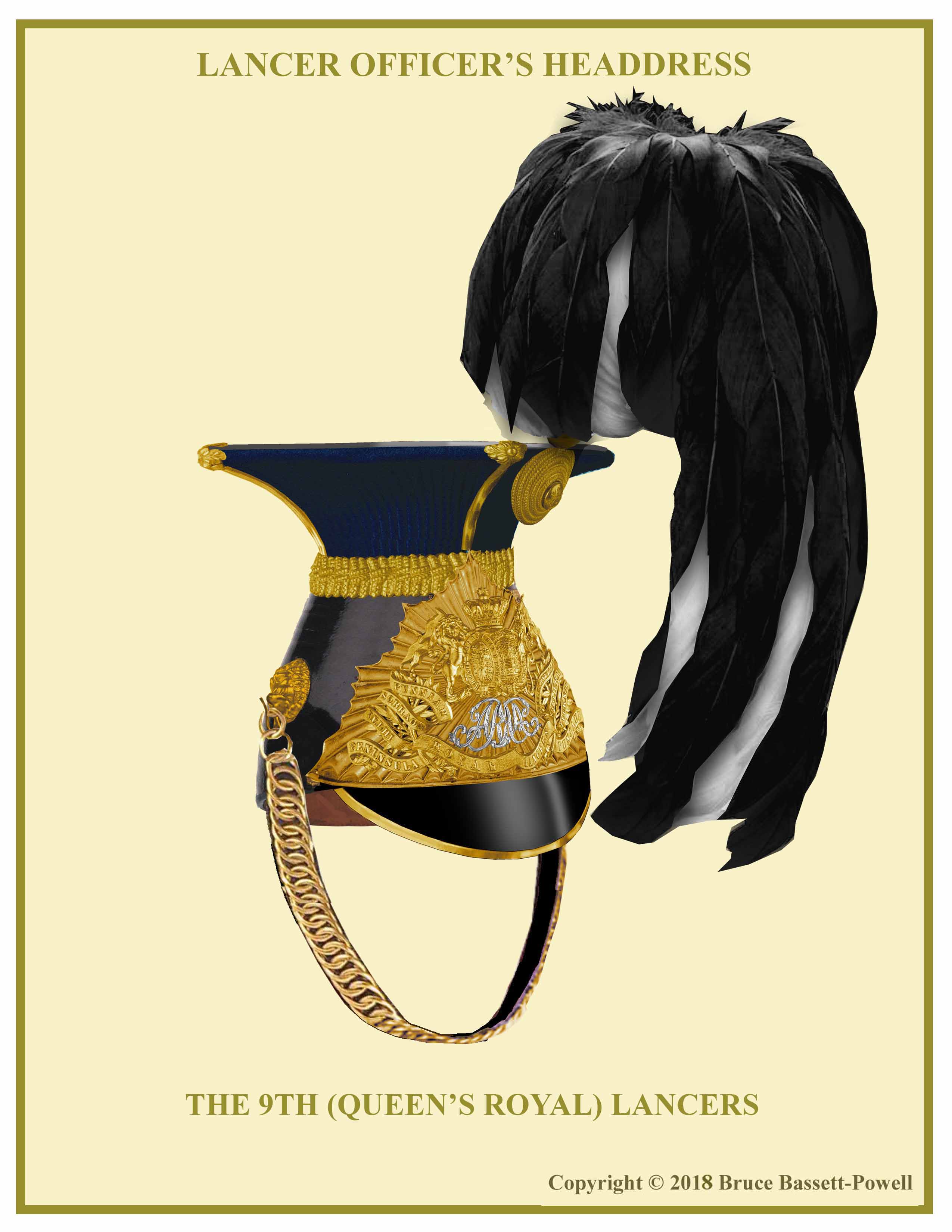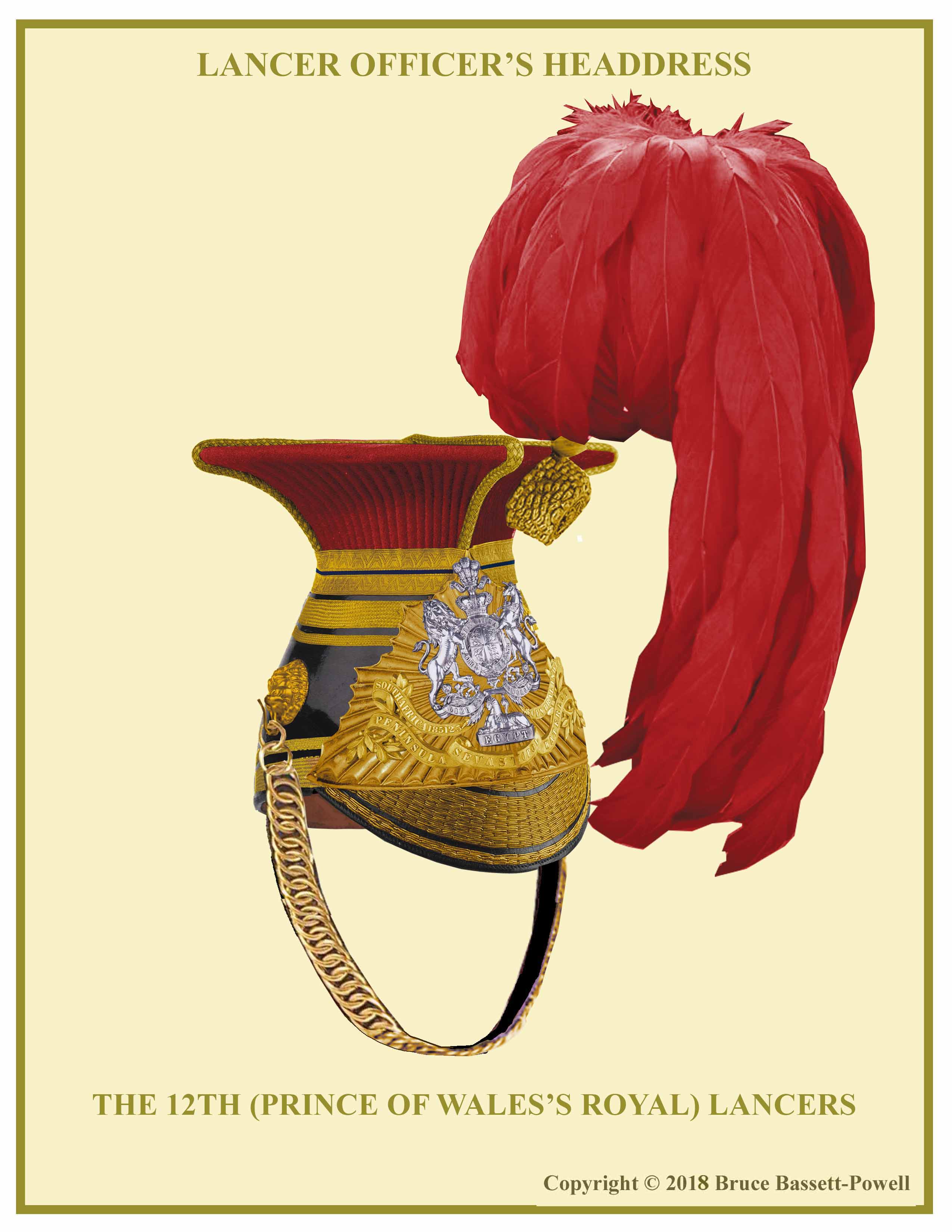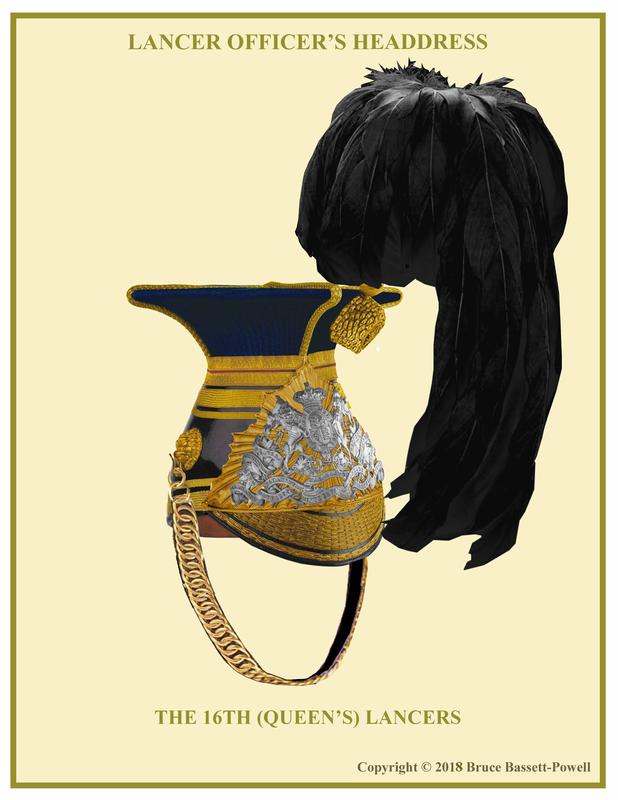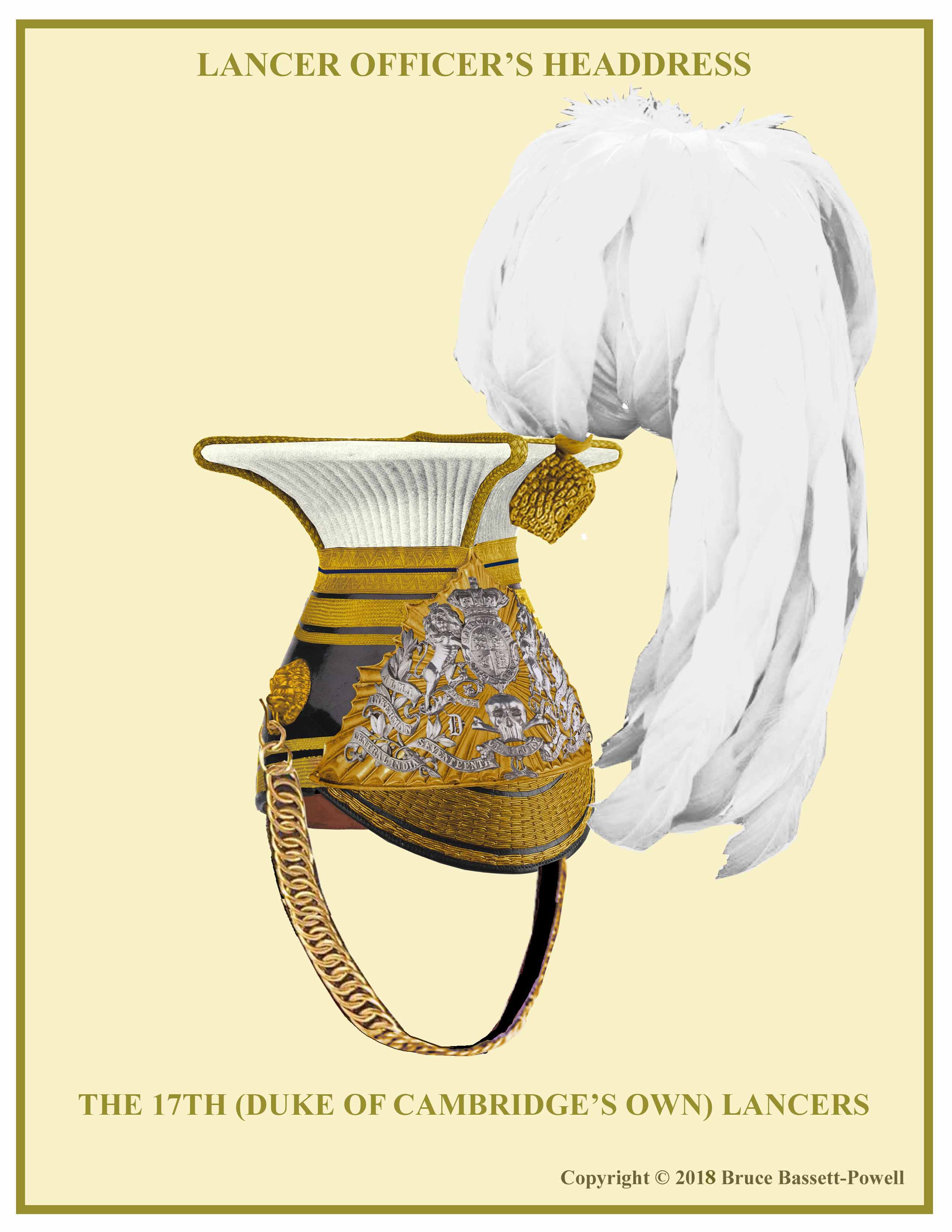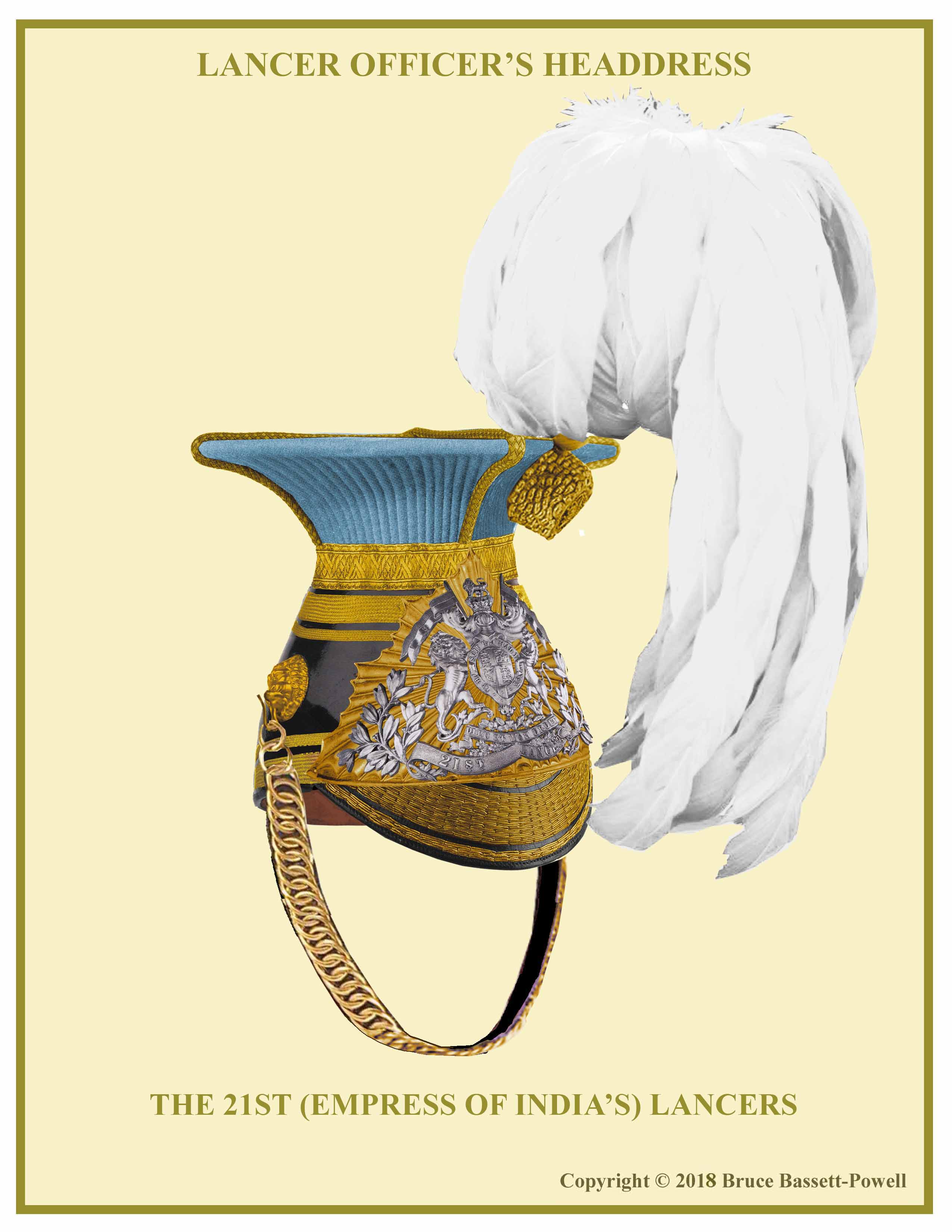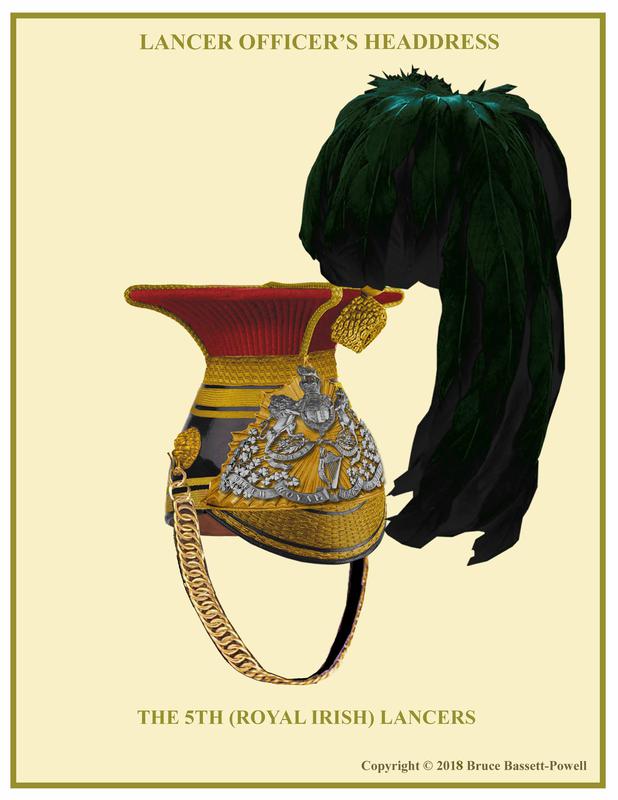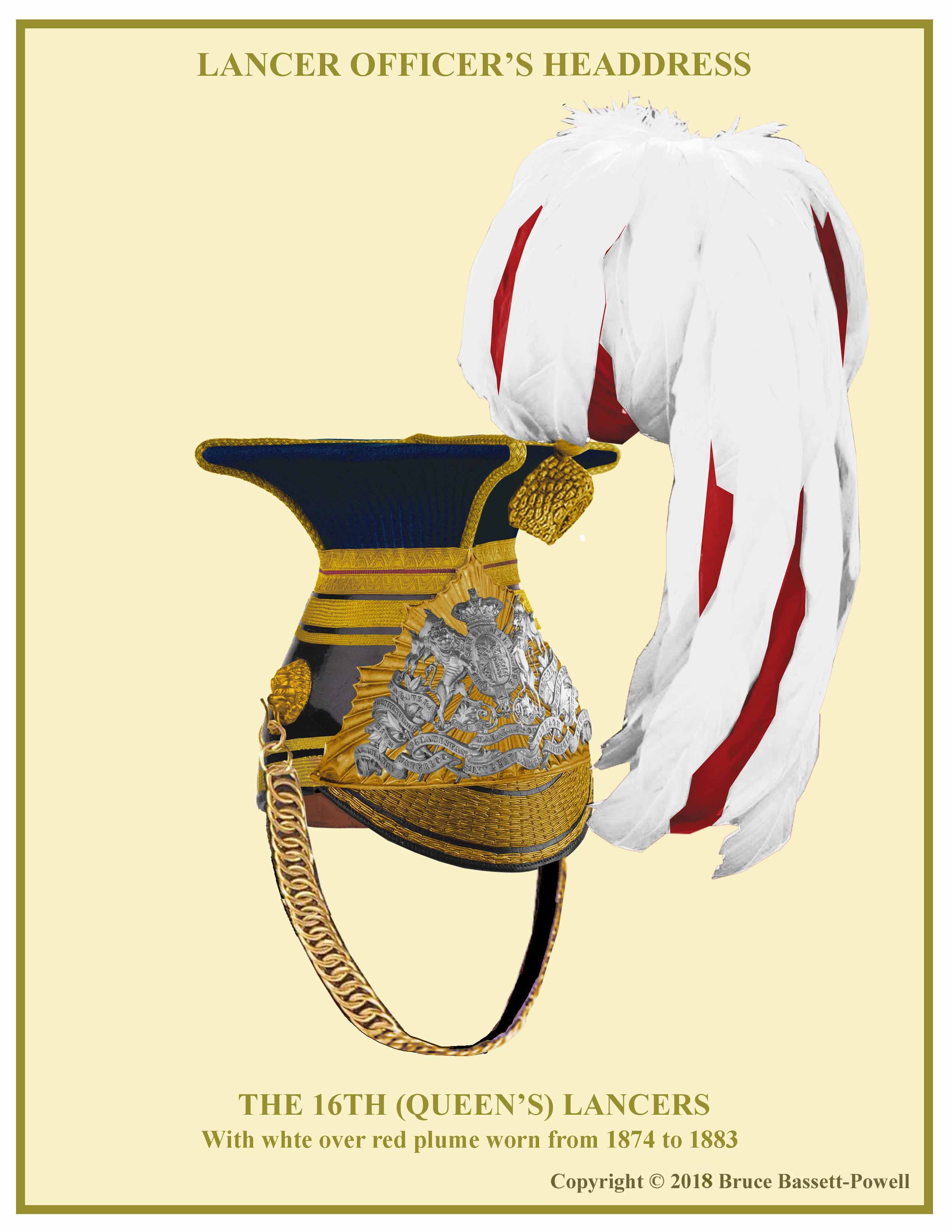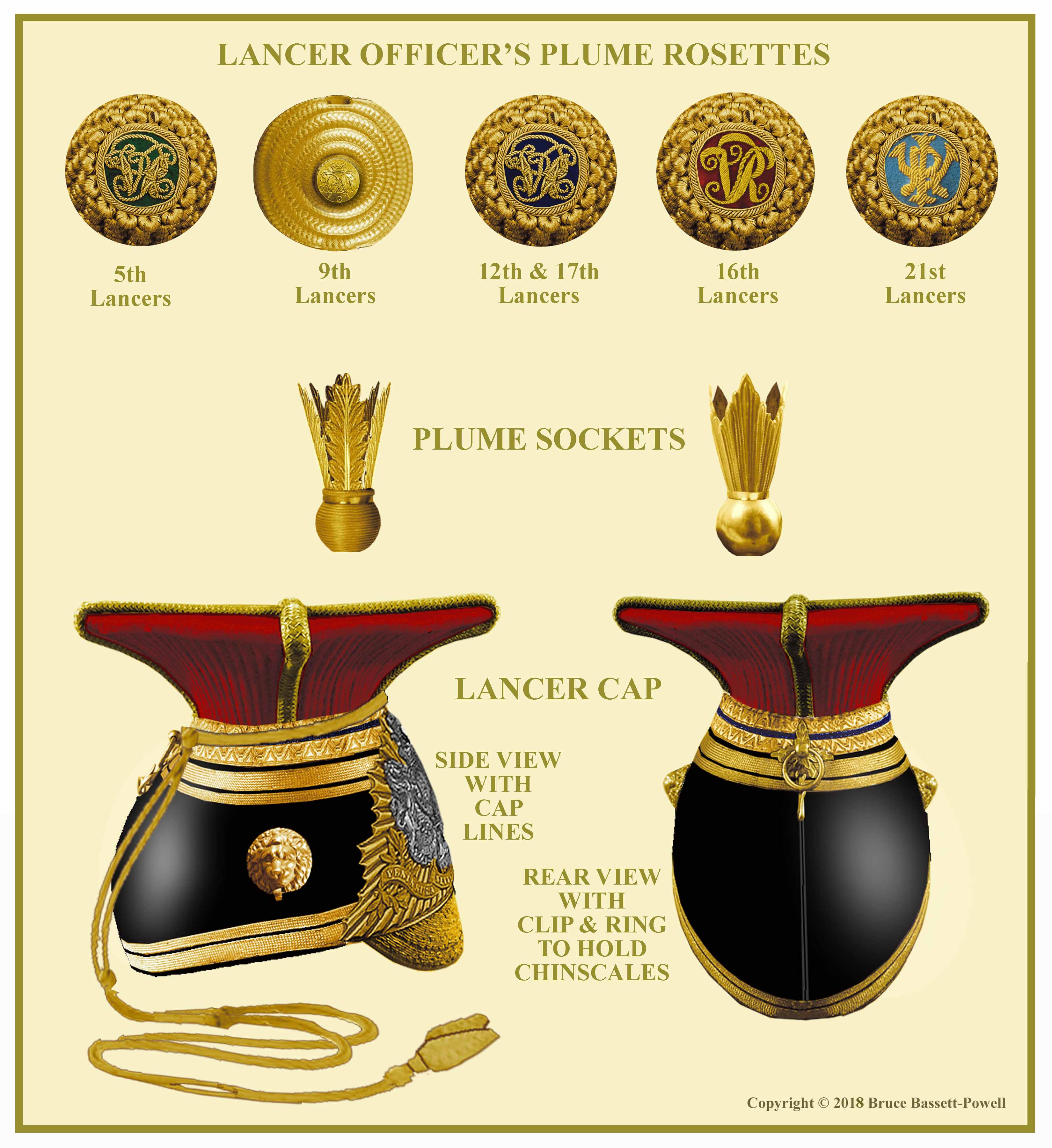UNIFORMS, ARMS & EQUIPMENT - LANCERS
THE LANCER REGIMENTS 1881-1902
The 5th (Royal Irish) Lancers
Raised 1858. (Took traditions and battle honours of old 5th Irish Dragoons disbanded in 1799)
The 9th (Queen’s Royal) Lancers
Raised 1685 as Dragoons. Light Dragoons in 1783 and Lancers in 1816.
The 12th (Prince of Wales’s Royal) Lancers
Raised 1715 as Dragoons. Light Dragoons in 1768 and Lancers in 1816.
The 16th (Queen’s) Lancers
Raised 1759 as Light Dragoons in 1775 and Lancers in 1816.
The 17th (Duke of Cambridge’s Own) Lancers
Raised 1759 as Light Dragoons in 1775 and Lancers in 1822. Duke of Cambridge’s in 1876.
The 21st (Empress of India's) Lancers
Raised 1857 as 3rd Bengal Light Cavalry. On British establishment as Hussars in 1862
Converted to Lancers in 1897. Empress of India's in 1899
HEADDRESS
The headdress worn by British Lancers was from the beginning inspired by the Polish national four-cornered cap known as the Tschapka or Confederatka. As with most European armies who wore the same style of cap, they were tall, colourful and bedecked with gold bullion loops. They were worn in battle by the 16th Lancers in 1846 at Aliwal ((Under a white cover) and by the 17th Lancers at the famous charge of the Light Brigade at Balaclava in 1854.
The British officer’s Lancer Cap authorised for wear in 1856 may be one of the most impressive and beautiful military headdresses ever designed. Overall it was 6 ½ Inches high in front, 7 inches at the sides and 8 ½ Inches at the rear. The trencher (square) top was 7 inches on each side. For all regiments except the 9th Lancers the top of the cap was covered in ribbed cloth (scarlet for the 5th and 12th Regiments, dark blue for the 16th and white for the 17th). A gold bullion rosette with Royal cypher in gold on a velvet backing was attached to the upper left side. The velvet backing was dark green for the 5th, dark blue for the 12th and 17th and scarlet for the 16th regiment). A gilt spring socket was fitted to the upper part of the rosette to take the plume. The top was edged in gold gimp and orris cord across the top and down the angles. The skull was of black patent leather and where the top joined it (the waist) there was a band of gold lace, which in the 12th and 17th lancers had a blue central stripe and the 16th a scarlet stripe. The 5th Lancers had a regimental pattern. Below that and at the bottom edge of the scull were two bands of gold lace. The peak was also of black patent leather embroidered with three bands of gold purl lace. A gilt metal leaf at the back of the waist had a gold ring attached for the plain burnished curb chain which could also attach to the gilt lion heads at the sides.
The 9th Lancer’s cap was of the same dimensions as the other regiments with the following differences: Plain black leather trencher top with dark blue ribbed cloth sides. The angles were edged with gilt metal strips with gold leaf decorations at the points. The rosette was of plain gilt cord with spring socket. The waist was encircled by a decorative gilt band one inch wide. The scull and peak were of plain black patent leather with the peak edged in gilt metal.
The 21st Hussars when they became Lancers in 1897 adopted the same style of cap as the other regiments (except the 9th) with a French Grey top with regimental pattern lace band around the waist. The rosette had a French Grey velvet backing with, at first, the Royal Cypher and in 1899 the Imperial cypher.
All regiments had plumes of drooping swan’s feathers measuring 14 inches in front seven inches behind (from the bend). The colours were as follows:-
5th Lancers – Dark Green
9th Lancers – Black over White
12th Lancers – Scarlet
16th Lancers – White over Scarlet until 1883, then Black
17th Lancers – White
21st Lancers – White.
The cap plate consisted of a gilt or gilding metal rayed plate. The regimental badges and battle honours in silver and/or gilt were separately attached to the plate.
The 1856 pattern cap remained essentially unaltered for the remainder of its existence.
CAP EMBELLISHMENTS
The rosettes on all Lancer Caps (except the 9th) bore the Royal Cypher. The style of cypher differed occasionally, with the “frillier” version being replaced by a more streamlined type (See 16th Lancers). The Royal Cypher on the 21st Lancer Cap was changed to the Imperial Cypher in 1899.
The cap lines, according to Dress Regulations, went once around the waist of the cap before going behind the body, around it and looped up to the left breast. It is believed that some officers hooked the caplines to the ring on the leaf plate.



